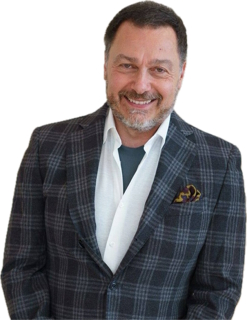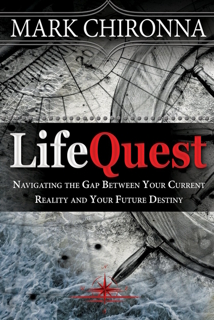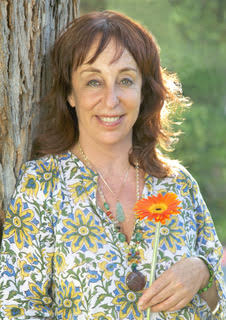Leo XIV: A Name Chosen, A Legacy Continued
- Written by Mark J. Chironna, PhD.

From the moment we enter the world, a name is given to us. It is spoken over us before we can understand or even respond. That first name is a gift, but it also carries expectations, hopes, dreams, and sometimes burdens. It shapes how others see us, and, over time, how we see ourselves. The power of a name lies in the identity it bestows, an identity we grow into, wrestle with, or occasionally rebel against.
In the ancient stories handed down to us through generations, a name was never merely a label, it held within it the essence of a person’s character and calling. Abram becomes Abraham, not because of whim or chance, but because something new is being formed within him. Jacob, after a night-long struggle with the divine, is given the name Israel, signifying one who wrestles and prevails. In these sacred stories, a change of name is always a sign that one is stepping into a new season, a deeper sense of purpose, a fuller sense of belonging.
When someone who was named at birth reaches a place in life where they choose their own name, something extraordinary happens. This act isn’t simply symbolic; it’s a declaration of identity, a signal that the path ahead will be marked by conscious intention rather than passive acceptance. For a pope, choosing a name is a way of signaling a vision, an aspiration, even a promise. He selects not just a sound, but a story, aligning himself with those who have walked before him, whose lives spoke in powerful ways.
On another level, to name oneself anew is to recognize the need to leave something behind and turn toward something larger. It means embracing an identity shaped less by circumstance and more by conviction, wisdom, and deliberate choice. By choosing the name Leo, the new pope reached into history and grasped the legacy of predecessors whose voices rang clearly in times of uncertainty, embodying a decisive commitment to courage, clarity, and faithfulness.
When Cardinal Robert Francis Prevost stepped forward as Pope Leo XIV, he entered into a story already unfolding, one woven deeply into his own lived experience. Every life is a story being continually authored, each decision, each turning point reshaping how we understand who we are. This inner story emerges from the memories we carry, the choices we make, and the sense we build of what matters most. It is our personal narrative, guiding us quietly yet powerfully, often beneath our awareness. Until he stepped out on the Papal Balcony at the Vatican, Cardinal Prevost lived within a story he had carefully constructed and carried, a story he continually told himself about himself, an identity formed through the unique contours of his experiences, convictions, and relationships.
Born and raised in Chicago within a family shaped by French, Italian, and Spanish immigrant roots, Robert Prevost’s early identity was deeply marked by his Catholic upbringing. His formative journey carried him into religious life, joining the Augustinian Order in 1977 and leading to his ordination as a priest in 1982. Much of his identity took shape through decades of dedicated service in Peru as missionary, teacher, and diocesan leader—so much so that Peru eventually became his adopted home. Leadership continued to define Prevost’s narrative, first as Prior General of the Augustinians for twelve years, then as Bishop of Chiclayo, and eventually as Prefect of the Dicastery for Bishops and a cardinal appointed directly by Pope Francis. Each role deepened his sense of purpose, commitment, and self-understanding, laying a foundation for the moment when he would step into a larger story as Pope Leo XIV.
Yet in the moment of becoming pope, something uniquely significant occurred. It wasn’t a first surrender; rather, it was a decisive and unmistakable deepening of the commitment he'd already made. The narrative that Cardinal Prevost had carefully cultivated over decades intersected in a dramatic new way with the great narrative of Christ’s Cross—a narrative defined not by asserting oneself, but by pouring oneself out for others. By taking the name Leo, he deliberately wove his personal story even more intimately into this larger narrative of sacrificial love, faithful courage, and humble leadership. Robert Prevost remained Robert Prevost, yet he allowed his story to expand and intensify, willingly embracing a role that would stretch his identity and invite him into an even deeper, more costly, and more meaningful surrender.
Historically, when Leo the Great became pope in 440 AD, the Roman Empire faced existential crises from within and without. Internally, fierce theological disputes threatened to divide the Church, particularly concerning the nature of Christ’s divinity and humanity. Externally, barbarian invasions, epitomized by Attila the Hun, placed Rome itself under threat. Leo stood courageously amid these crises, articulating clearly the orthodox understanding of Christ’s nature at the Council of Chalcedon in 451. In 452, he famously confronted Attila personally, persuading him to spare Rome from destruction. At an archetypal level, Leo the Great symbolizes moral courage, theological clarity, and a protective shepherd who faces chaos directly, establishing stability and preserving human dignity in turbulent times. Today, this archetype stirs within the collective consciousness, summoned forth again by threats of fragmentation, instability, and authoritarian aggression.
Centuries later, Leo XIII served from 1878 to 1903, another critical turning point significantly reshaped by industrialization, rapid economic changes, and growing disparities between the wealthy and impoverished. In 1891, responding directly to these societal upheavals, he issued the groundbreaking encyclical Rerum Novarum ("Of New Things"), courageously addressing workers’ rights, human dignity, and the social responsibilities of employers and governments. Leo XIII embodied the archetype of the prophetic advocate and wise elder who, with moral clarity and compassionate boldness, confronted unjust structures and called society to a vision of solidarity, justice, and shared human dignity. In today’s collective unconscious, amid a resurgence of severe economic disparity, exploitation, and social unrest, the archetypal significance of Leo XIII again resonates urgently, calling forth leaders who dare to speak prophetically into injustice and systemic suffering.
Importantly, Robert Prevost does not cease to be Robert Prevost. Just as Simon remained Simon even after becoming Peter, Prevost’s own story remains distinctly his own—yet it now finds itself intimately woven into the larger narrative embodied by the name Leo. His lifelong journey—from priest to bishop, from missionary in Peru to cardinal serving at the heart of the Church—reflects a sustained commitment shaped by continuous surrender. By embracing the name Leo XIV, he is neither discarding nor diminishing his past; instead, he is carrying it forward into a broader, shared story marked by courage, clarity, and compassion.
This greater story is the historic narrative of faith, sacrifice, and bold witness represented by his chosen predecessors. In deliberately taking the name Leo, Prevost places himself within the tradition of Leo the Great, who courageously stood against destructive chaos, and Leo XIII, who prophetically championed justice amid social upheaval. As Pope Leo XIV, Prevost consciously steps into this legacy, allowing it to shape and inspire him in confronting today’s pressing challenges. The name is more than symbolic; it becomes the very source of strength and clarity from which he will draw, honoring the continuity of his past while fully committing himself to the Church’s future.
Ultimately, choosing the name Leo signifies more than honoring predecessors; it embodies the voice urgently needed in the world today—a voice clear in truth, courageous against injustice, and humble in service. It is a calling accepted with sober joy and confident hope.
Sources
-
Vatican News. “Biography of Pope Leo XIV, born Robert Francis Prevost.” May 8, 2025. https://www.vaticannews.va/en/pope/news/2025-05/biography-of-robert-francis-prevost-pope-leo-xiv.html
-
Reuters. “For US Cardinal Prevost, road to becoming Pope Leo was paved in Peru.” May 9, 2025. https://www.reuters.com/world/us-cardinal-prevost-road-becoming-pope-leo-was-paved-peru-2025-05-09/
-
Vatican. “Rerum Novarum (May 15, 1891) | LEO XIII.” https://www.vatican.va/content/leo-xiii/en/encyclicals/documents/hf_l-xiii_enc_15051891_rerum-novarum.html
-
Britannica. “Saint Leo I | Biography, Papacy, Legacy, & Facts.” https://www.britannica.com/biography/Saint-Leo-I
-
Britannica. “Leo XIII | Biography, 19th Century Pope, & Social Reformer.” https://www.britannica.com/biography/Leo-XIII
-
Britannica. “Council of Chalcedon | Description, History, & Significance.” https://www.britannica.com/event/Council-of-Chalcedon
-
New Advent. “CATHOLIC ENCYCLOPEDIA: Pope St. Leo I (The Great).” https://www.newadvent.org/cathen/09154b.htm
-
New Advent. “CATHOLIC ENCYCLOPEDIA: Pope Leo XIII.” https://www.newadvent.org/cathen/09169a.htm
-
New Advent. “CATHOLIC ENCYCLOPEDIA: Council of Chalcedon.” https://www.newadvent.org/cathen/03555a.htm
-
Vatican Press Office. “PREVOST Card. Robert Francis, O.S.A.” https://press.vatican.va/content/salastampa/en/documentation/cardinali_biografie/cardinali_bio_prevost_rf.html


Written by Mark J. Chironna, PhD. - https://www.markchironna.com/
Bishop Mark J. Chironna PhD
Church On The Living Edge
Mark Chironna Ministries
The Issachar Initiative
Order of St. Maxmius
United Theological Seminary, Visiting
Professor, Co-director, House of Pentecostal Studies
Dr. Mark Chironna is a public scholar, executive and personal coach, and thought leader with five decades of experience in leadership development, cultural analysis, and future-focused strategies. With advanced degrees in Psychology, Applied Semiotics and Futures Studies, and Theology, he brings a unique interdisciplinary approach to helping individuals and organizations navigate complexity, unlock potential, and craft innovative solutions.
As a Board Certified Coach with over 30,000 hours of experience, he empowers leaders and teams to thrive through resilience, foresight, and actionable strategies. Passionate about human flourishing, he integrates psychological insight and cultural trends to inspire growth and transformation.







